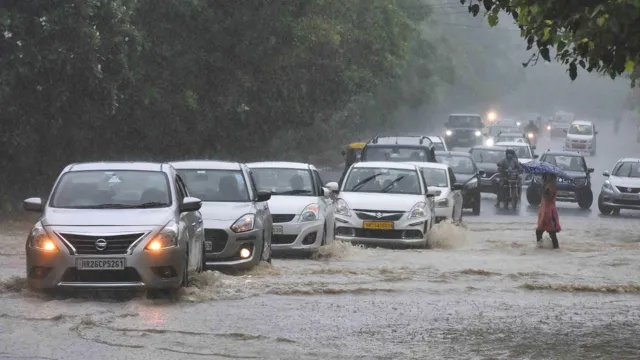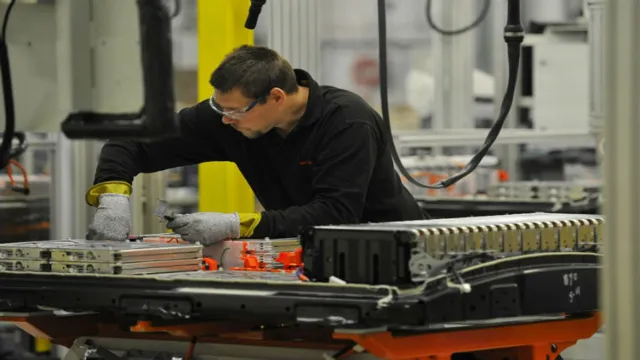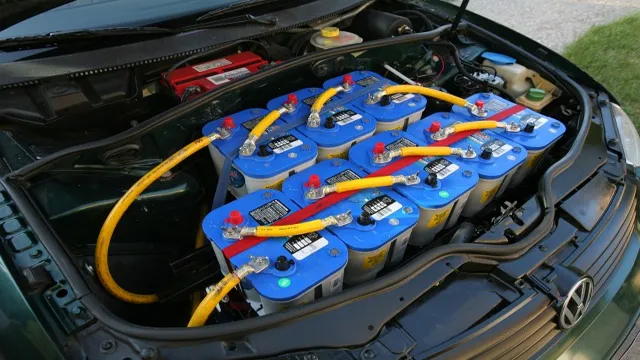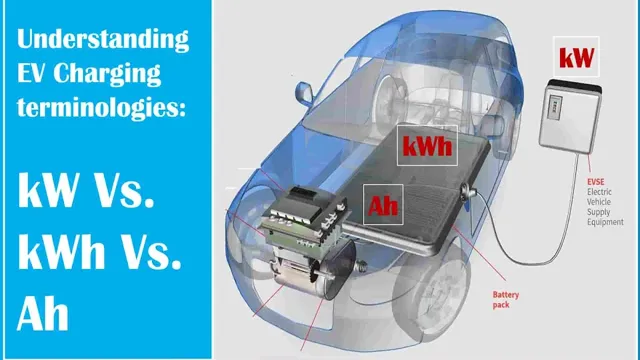Revolutionizing Mobility: How Electric Cars Survive Floods with Innovative Batteries
Electric cars have been increasing in popularity due to their eco-friendliness and cost-efficiency. However, there are still some misconceptions and concerns when it comes to their batteries and potential damage caused by floods. With the recent surge in extreme weather events, it’s become even more crucial to understand how electric vehicles are affected by flooded batteries and what can be done to prevent damage.
In this blog, we’ll break down what you need to know about electric cars and flooded batteries, so you can rest easy during the rainy season.
The Impact of Flood on Electric Car Batteries
Electric cars are becoming increasingly popular due to their eco-friendly nature, however, it is important to consider their vulnerability to floods. In the event of a flood, water can penetrate the car and affect the electric car battery, which is usually located at the bottom of the vehicle. Water damage can severely impact the battery’s ability to hold a charge and can cause the car’s electric system to malfunction.
It is crucial to take immediate action to prevent water from reaching the battery in the event of a flood. Electric car owners should also avoid driving through flooded areas as it can cause irreparable damage to their vehicle and compromise its safety. If your electric car has been affected by flooding, it is recommended to seek professional assistance to ensure the safety of the vehicle and its battery.
Being cautious and taking appropriate measures can help protect your electric car battery from flood damage and ensure its longevity.
Understanding Electric Car Batteries
Electric car batteries have become increasingly popular due to their eco-friendly properties and reduced fuel costs. However, one concern that many people may have is how these batteries handle extreme weather conditions such as floods. Electric car batteries are designed to be water-resistant and can function even when submerged in water for a short period of time.
However, prolonged exposure to water can damage the battery cells and reduce their lifespan. Therefore, it is crucial to take steps to protect the electric car batteries in flood-prone areas. It is highly recommended to avoid driving through flooded roads or parking in areas prone to flooding.
It is also important to regularly inspect the battery for any signs of damage or deterioration. By taking these simple precautions, electric car owners can ensure the longevity and performance of their batteries, even in extreme weather conditions.

How Flooded Batteries Affect Electric Cars
Electric cars have been gaining popularity in recent years due to their eco-friendliness and low operating costs. However, the batteries inside electric cars can be affected by floodwater, which can lead to significant damage and costly repairs. Flooded batteries are a result of water seeping into the battery compartment, which can cause the battery to short circuit.
This can result in a decreased lifespan of the battery and reduced performance of the electric car. In some cases, the battery may need to be replaced entirely, which can be an expensive repair. It is important to take measures to prevent water damage to the battery, such as avoiding driving through flooded areas and parking in a higher location during periods of heavy rain.
To ensure the longevity of your electric car battery, it is also recommended to have it regularly maintained and inspected by a professional.
The Risks of Using an Electric Car with a Flooded Battery
Electric cars are a fantastic innovation, but they are not immune to the effects of floods. A flooded battery can pose serious risks to both the vehicle and the driver. Aside from being potentially hazardous, it can also damage the car beyond repair.
From a safety perspective, a flood-damaged battery can emit harmful gases or even explode. It is essential to avoid turning on your electric car or charging it if the battery has been exposed to water damage. Always turn off the car, disconnect the battery, and call for professional help in handling the situation.
Anyone who ignores these safety precautions risks significant damage to their car and themselves. When dealing with a flood-damaged electric car battery, it’s always better to be safe than sorry.
The Safety Risks of Flooded Batteries
As electric cars become more popular, we must consider the safety risks associated with their batteries, particularly when they become flooded. Flooded batteries are those that have been submerged underwater, and they pose a significant danger when used in an electric car. When flooded batteries are charged, they can produce hydrogen gas, which is highly flammable and can potentially lead to an explosion.
In addition to the risk of explosion, flooded batteries can also leak harmful chemicals, such as lead and acid, which can pose a danger to both the occupants of the car and the environment. It is essential to ensure that any electric car with a flooded battery is not used and that it is safely disposed of. The best way to avoid these risks is to take preventative measures and ensure that your electric car stays dry and safe from any water damage.
By doing so, you can ensure the safety of yourself and others.
What Happens When You Use an Electric Car with a Flooded Battery?
When using the term “flooded battery” to refer to electric cars, we’re talking about lead-acid batteries that use liquid electrolyte solutions. Unlike the lithium-ion batteries used in most electric cars today, lead-acid batteries are more prone to flooded conditions due to their susceptibility to overcharging. If a flooded battery is used in an electric car, the risks can range from minor inconveniences to more serious safety concerns.
For instance, the battery may not hold a charge for as long as it should, reducing the car’s driving range. Additionally, a flooded battery may leak acid, which can corrode the car’s electrical components and cause a short circuit. This can lead to catastrophic consequences, including a fire in the car.
Therefore, if you have an electric car, it’s best to use the type of battery recommended by the manufacturer to ensure that your vehicle runs smoothly and safely.
The Long-term Effects of Flooded Batteries on Electric Cars
Electric car batteries are a vital component of the car’s ecosystem. They are responsible for providing power to the motor and keeping all of the electronics working properly. Flooded batteries, however, can pose long-term risks to the health of your electric car.
Flooded batteries occur when the battery’s acid level is too high, causing it to overflow and leak into the battery compartments. This can lead to a buildup of corrosion and damage to the internal parts of the battery, diminishing its overall performance. In addition to affecting the battery’s ability to provide power, flooded batteries can also cause damage to the electrical system of the car, such as short circuits or burnt-out fuses.
It’s important to keep your electric car’s battery in good condition to ensure that it functions properly and maximizes the life of the vehicle. A battery with a flooded cell can reduce the range and lifespan of an electric car, making it imperative for EV owners to keep a close eye on the state of their batteries.
Dealing with a Flooded Battery in Your Electric Car
Electric cars can offer many benefits, such as environmental friendliness and lower operating costs, but dealing with a flooded battery is one issue that owners may face. If your electric car has been submerged in water or exposed to heavy rain, it’s essential to take precautions to avoid damage to your car’s battery. It’s crucial to act quickly, as water can cause your battery to short circuit and lead to permanent damage.
The first step is to switch off the car and remove the cables from the battery. Then, take the car to a professional mechanic for an assessment and possible replacement of the battery or other components that may have been damaged. Remember to always prioritize your safety and seek expert help when it comes to dealing with a flooded battery in your electric car.
By being proactive and taking the necessary steps, you can prevent severe damage to your vehicle, ensuring safe and smooth driving for years to come.
What to Do if Your Electric Car’s Battery Is Flooded
Electric car battery, flooded battery Dealing with a flooded battery in your electric car can be a daunting task. The most important thing to do is to stay calm and follow these steps to resolve the issue. First, disconnect the battery from the car to prevent any further damage.
Next, carefully inspect the battery for any visible signs of damage, such as cracks or leaks. If the battery appears to be intact, then it can be dried out using a specialized battery drying system. These systems use dry air to remove any moisture from the battery cells, restoring it to its normal function.
However, if the battery is damaged beyond repair, then it may need to be replaced. In this case, it’s best to consult with a professional electric car mechanic to ensure that the replacement is done correctly and safely. Remember, flooded batteries can be dangerous, so it’s important to handle them with caution.
By following these steps, you can safely and effectively deal with a flooded battery in your electric car, ensuring that you get back on the road as quickly as possible.
Tips for Preventing Flood Damage to Your Electric Car’s Battery
Electric car battery flooding can be a nightmare for drivers. Fortunately, there are a few things you can do to prevent this from happening. First, try to avoid driving through standing water, as it can easily seep into the battery and cause damage.
Secondly, ensure that your car’s battery is properly sealed and protected against leaks. You can also invest in flood protection devices, such as waterproof seals and venting systems. Lastly, keep an eye on the weather forecast and plan your driving routes accordingly.
By taking these precautions, you can lower your risk of battery flooding and keep your electric car in top condition.
Conclusion
In conclusion, owning an electric car during a flood may seem risky, but it’s actually the perfect time to show off your eco-friendliness. With a fully charged battery, your electric car can float through flooded streets with ease, providing a sustainable alternative to gas-guzzling vehicles. Plus, with the added benefit of regenerative braking, you can even charge your battery while you drive! So next time you’re caught in a deluge, don’t panic – just hop in your electric car and let the flood battery take you for a spin.
“
FAQs
Are electric cars safe to drive in flooded areas?
No, electric cars are not safe to drive in flooded areas as water can damage the battery and electric components of the car, which can lead to serious accidents.
Can the battery of an electric car survive a flood?
The battery of an electric car is not designed to survive a flood. Water can seep into the battery and cause irreversible damage, rendering the car unusable.
What precautions should I take while driving an electric car in a flood-prone area?
If you live in a flood-prone area, it is best to avoid driving an electric car during such times. However, if unavoidable, make sure to park your car in a safe and elevated area and avoid driving through flooded roads.
How can I protect my electric car from flood damage?
To protect your electric car from flood damage, you can invest in a waterproof cover and park the car in a safe, elevated area. You can also disconnect the battery and other electrical components and store them in a dry place during the flood season.






